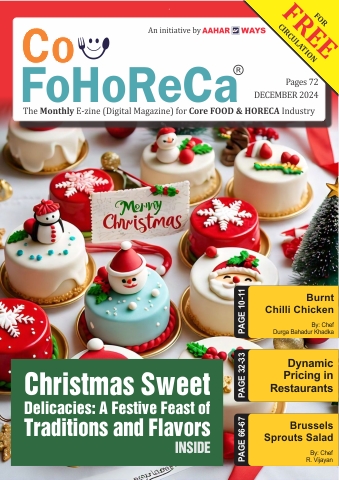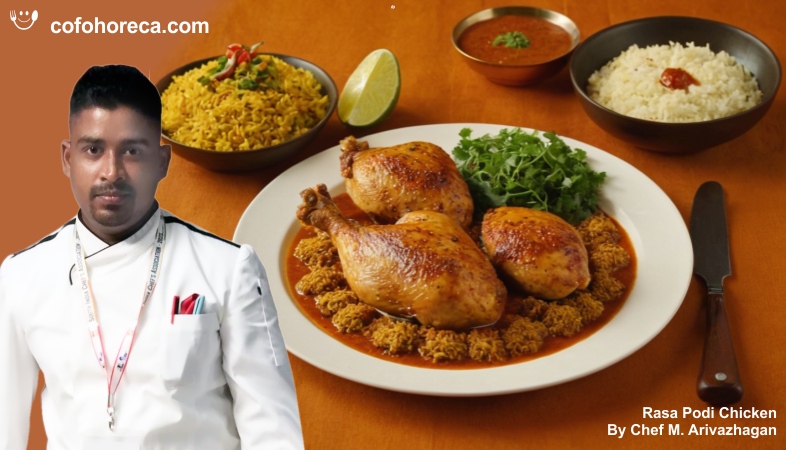Bringing Culture to the Plate: How Caterers Can Embrace Diverse Cuisines
Bringing culture to the plate through diverse cuisines offers caterers an exciting opportunity to create meaningful and memorable dining experiences.
In today's globalized world, food is one of the most
significant ways to experience and share culture. Caterers have a unique
opportunity to bring diverse cuisines to the forefront of their offerings,
creating memorable dining experiences that reflect the rich tapestry of global
culinary traditions. By embracing a variety of cultural influences, caterers
can not only appeal to a broader clientele but also celebrate the stories and heritage
behind the dishes they serve.
Understanding the origins of the cuisines being represented is crucial for caterers looking to authentically embrace diverse culinary traditions. Each dish tells a story and carries with it the traditions, techniques, and flavors of its culture. Researching the history and significance of various foods can provide valuable context and enhance the authenticity of the catering experience. Caterers can delve into the ingredients, preparation methods, and presentation styles that define different cuisines, allowing them to honor the heritage of each dish. This depth of knowledge can be shared with guests through menu descriptions or during service, fostering a greater appreciation for the meal.
To successfully incorporate diverse cuisines into catering menus, chefs should prioritize flavor and authenticity. This means sourcing ingredients that are true to the cuisine being represented, rather than relying on substitutions that may alter the dish’s character. For example, using traditional spices, herbs, and preparation methods can enhance the overall quality of the food and ensure that the flavors are as intended. Caterers can also consider collaborating with chefs or culinary experts who specialize in specific cuisines to elevate their offerings and ensure accuracy in their interpretations.
Presentation plays a key role in conveying the cultural significance of a dish. The way food is plated and served can reflect the traditions and aesthetics of its origins. Caterers can explore unique serving styles, such as family-style dining common in Mediterranean cultures or the bento box presentations found in Japanese cuisine. By adopting these culturally relevant presentation methods, caterers can enhance the visual appeal of their dishes while also providing a more authentic experience for guests.
Additionally, offering themed events that celebrate specific cuisines can create immersive dining experiences. Caterers can design menus that reflect a particular region or culture, complete with decor, music, and atmosphere that resonate with the theme. For instance, a Mexican fiesta might include vibrant decorations, mariachi music, and a menu featuring traditional dishes such as tamales, mole, and churros. Such thematic experiences not only engage the senses but also transport guests to different parts of the world, making the meal a celebration of culture.
Educating staff about the cuisines being served is another important aspect of embracing diversity in catering. Training team members on the cultural significance of the dishes can empower them to engage with guests and answer questions knowledgeably. This not only enhances the dining experience but also fosters a sense of pride among staff in the culinary offerings. Caterers can host tastings or workshops that allow staff to familiarize themselves with the ingredients, preparation methods, and flavor profiles, ensuring that they can share this information with guests.
Moreover, catering menus can be adapted to accommodate dietary restrictions while still celebrating diverse cuisines. Many culinary traditions offer naturally plant-based or gluten-free options, allowing caterers to showcase the flavors and ingredients of various cultures while meeting the needs of all guests. For example, Middle Eastern cuisine features a wealth of dishes based on vegetables, grains, and legumes that are not only delicious but also inclusive for various dietary preferences. This approach demonstrates that embracing diversity in cuisine can also be aligned with modern dietary trends.
Bringing culture to the plate through diverse cuisines offers caterers an exciting opportunity to create meaningful and memorable dining experiences. By understanding the origins and significance of different culinary traditions, prioritizing authenticity in ingredients and preparation, and adopting culturally relevant presentation styles, caterers can enhance their offerings and engage guests on a deeper level. Themed events, staff education, and inclusive menus further enrich the experience, allowing guests to connect with the stories and flavors of the world. In embracing this approach, caterers can not only celebrate culinary diversity but also foster a greater appreciation for the cultural heritage that shapes our global dining landscape.
.png)

















.jpeg)











